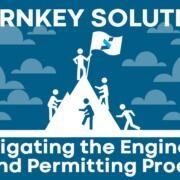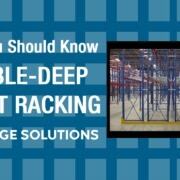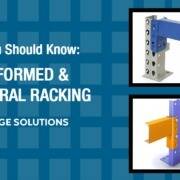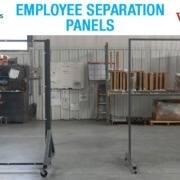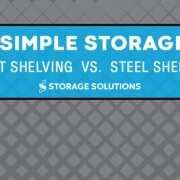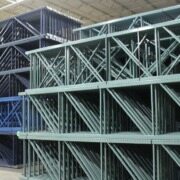In previous posts, we have discussed how warehouse design is the foundation upon which an optimal operation exists. Finding the right mix of picking efficiency, storage capacity, and equipment is the key to an optimal workflow. The best time to plan for these efficiencies is at the design stage, whether you are starting a new warehouse or reconfiguring your current layout.
One variable to consider is the width of the aisles in your facility. Conventional aisles tend to be between 12’ and 14’ wide. However, some designs are optimized with narrow aisles, ranging from 8’ to 10’-wide. Even more extreme designs feature very narrow aisles, which can be less than six feet wide. With each degree of narrowness, storage capacity increases. However, as the width of your aisle decreases, so does picking efficiency (unless other pick methodologies or technologies are applied).
Finding that perfect mix can be challenging. However, there are a few key variables that, once decided upon, can point you in the right direction to fit the best design to meet your narrow aisle needs.
Conventional or Narrow Aisles?
How frequently are forklifts going up and down your aisles? The answer to that question is probably the most significant determinant in adopting narrow aisles for picking products. If you need two forklifts – which typically vary between 4’ to 7’ wide – then narrow aisles may not be ideal for your operation.
However, all it takes is a simple calculation to see how much additional storage space you gain by switching to a narrow aisle. By reducing the width of your corridor, you can now fit more storage in your facility, and the transition from conventional to narrow aisles can bring an increase in storage capacity between 20-25%. Keep in mind, though, that there may be an increase in equipment costs if you need to outfit your operation to adapt to a narrow aisle. Also, your pick process may become less efficient because it may take more time to get from the storage area to your delivery area. These are all variables that we can talk you through as you evaluate your options.
How Narrow are Very Narrow Aisles?
To an even further degree, very narrow aisles are an option for warehouses looking to get the maximum storage capacity per square foot. Very narrow aisles are typically between 5’6” and 6’-wide and can increase your storage capacity by up to 40-50% when compared to conventional aisle widths. That sizeable increase – imagine 1,500 pick locations instead of 1,000 – can mean a lot for certain types of warehouse and picking needs.
Very narrow aisles also typically require an investment, both in terms of additional equipment but also in outfitting your warehouse. Most lifts designed for very narrow aisles operate based on the magnetic strip (or wire guidance) embedded directly into the floor of your facility. However, if your operation relies on case picking, broken case picking, or each picking, then this storage design may be the best way to maximize your space.
Safety First, Safety Last
Lastly, in evaluating your options, keep in mind the experience level of your warehouse associates. They may have years of experience in operating forklifts in various warehouses with various levels of traffic. However, what happens when you reduce aisle size and increase potential traffic stops? Did you give them the proper training? Can you rely on them to navigate your new warehouse layouts? Anything “new” brings with it a safety concern for your warehouse associates and equipment.
Let an Expert Guide You
There are many options when it comes to finding the best design for your warehouse layouts. Don’t worry. We have a team of experts with decades of experience in design and installation who have seen best practices in action and know that each operation is unique. If you are looking for some guidance, we are here to help. Call us at 800.474.2001 or submit a callback request, and we can talk about your warehousing needs and which storage solution is best for your operation.

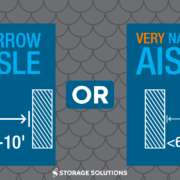


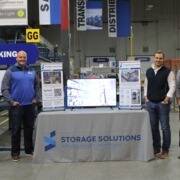
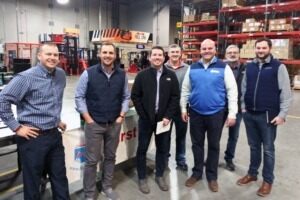 Storage Solutions has loaned Fetch Robotics’ HMIShelf robot, a picking transportation solution, to the Vincennes center for training purposes. The robot works alongside warehouse associates to carry a wide range of bins, totes, and packages from multiple pick zones or locations to a packing area. The HMIShelf is designed to reduce associate travel time, increasing productivity, and lessening the hardship of employees who would otherwise be carrying the loads.
Storage Solutions has loaned Fetch Robotics’ HMIShelf robot, a picking transportation solution, to the Vincennes center for training purposes. The robot works alongside warehouse associates to carry a wide range of bins, totes, and packages from multiple pick zones or locations to a packing area. The HMIShelf is designed to reduce associate travel time, increasing productivity, and lessening the hardship of employees who would otherwise be carrying the loads.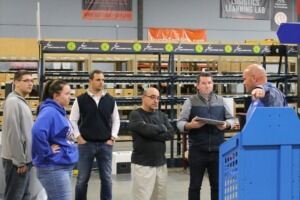 For the next two years, students and visitors to the VULTEC can obtain first-hand experience with the autonomous mobile robot and see how it can assist in real-world applications in the supply chain industry. Whether it comes to programming or picking, students in the programs will likely be working with elements of warehouse automation in some form in their next jobs.
For the next two years, students and visitors to the VULTEC can obtain first-hand experience with the autonomous mobile robot and see how it can assist in real-world applications in the supply chain industry. Whether it comes to programming or picking, students in the programs will likely be working with elements of warehouse automation in some form in their next jobs.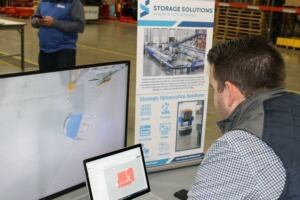 “Partnerships like these help us put premium value to the educational opportunities we give to our students. These AMRs are part of the future of the industry, so it gives our students a leg-up to have that first-hand knowledge of how they work and how to work with them.”
“Partnerships like these help us put premium value to the educational opportunities we give to our students. These AMRs are part of the future of the industry, so it gives our students a leg-up to have that first-hand knowledge of how they work and how to work with them.”